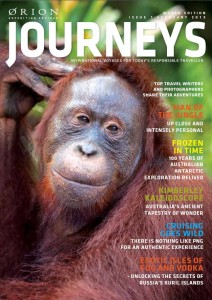The True Story behind JFK’s PT-109

Former U.S. President and then U.S. Navy Lt. John F. Kennedy is seen aboard the Patrol Torpedo boat PT-109 boat during World War II in the Pacific theatre, in this handout photograph taken on March 4, 1942. (REUTERS/John F. Kennedy Presidential Library/Handout)
David Ellis and Roderick Eime
Only the more adventurous travellers make it to remote Gizo in the Western Province of the Solomon Islands. It's a magical place with some of the world's best fishing as well as wreck and reef diving.
From Gizo you can venture a further 10 kilometres to a minuscule dot shown on most charts as either Kasolo Atoll or Plum Pudding Island. This sandy speck is better known in popular mythology as Kennedy Island – the place where a then 26 year old US Navy Lieutenant John F. Kennedy, commander of the motor torpedo boat PT109 and future President of the United States, together with ten of his crew, waded ashore in pitch-blackness after their boat was rammed and sunk by the Japanese destroyer Amagiri on the night of 2 August 1943.
Lifting the Shame of Savo Island
Heroes of the Solomons: Captain Frank Getting RAN
One of Australia’s most experienced and capable naval commanders was struck down in his prime during one of the most ferocious naval engagements of WWII. Was he later a cruel victim of a historical cover-up? Roderick Eime investigates.
The US involvement in the many battles of the Solomon Islands campaign are well documented through movies, documentaries and books. Yet, the substantial participation of Australian naval forces in that campaign is far less acknowledged.
When the Allied Forces began their landings on Guadalcanal and Tulagi on 7 August 1942, they were supported by a massive combined naval force which included the Royal Australian Navy (RAN) warships Canberra, Hobart and Australia.
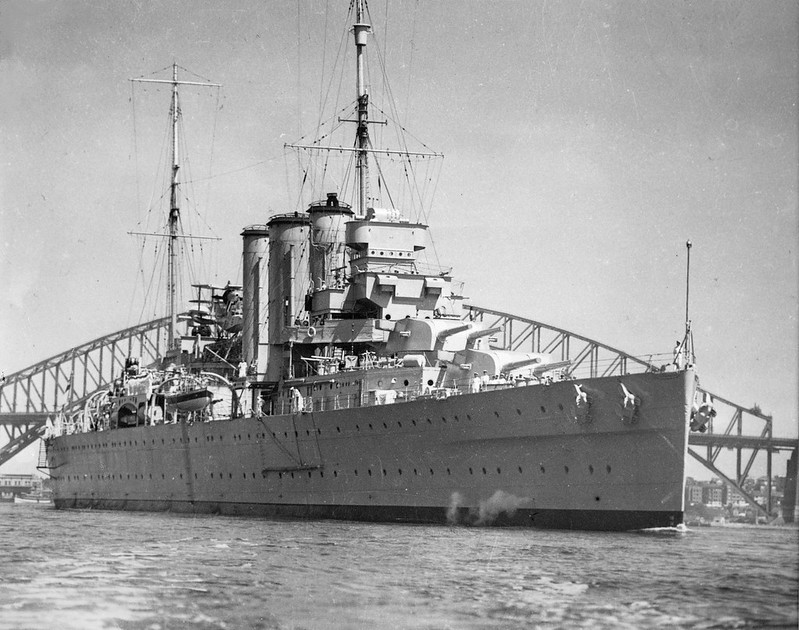
HMAS Canberra proudly in Sydney Harbour pre-war
HMAS Canberra was a British-built County class heavy cruiser of the Kent sub-class commissioned in 1928. At 10,000 tons and 180m in length, she was slightly larger than the more famous HMAS Sydney which had already been lost during her mutually destructive engagement with the German auxiliary cruiser Kormoran on 19 November 1941. Sydney’s sister ship, the light cruiser, HMAS Perth was lost in the Battle of Sunda Strait in March 1942.
Petra: Jordan’s Holy Grail
words and pictures by Roderick Eime
Described by a famous poet as “a rose-red city half as old as time”, Jordan’s Petra continues to beguile all who visit. But for how much longer?
Massive sheer rock faces, weathered by time and formed into a smooth, labyrinthine passage (siq), lead us a full mile along this ancient trading route. Two thousand years ago, traders bringing luxury goods such as incense, silk, spices and perfumes would pass through here, paying a toll to the resident Nabataeans who controlled the area.
Our caravan consists of backpack and camera-toting voyeurs, some on camels and others transported by precarious carts pulled by runaway horses. The delirious cries of over-excited tourists echo from the far reaches of the ravine, while above, some uninhibited teenager tries to perform a one-footed yoga tree on an overhanging ledge fifty metres above us. He wobbles alarmingly and the horrified crowd gasps and points in disbelief as he gathers himself up, just.
Twenty years ago, it was movie goers on the edge of their seats as Indiana Jones and his posse clip-clopped, mouths agape, into the ravine that opens up at the end of the siq. In a surrealistic reveal, the famous Al Khazneh (aka The Treasury) comes into view as we amble agog into the sunlight again.
This superb edifice is the trademark structure of Petra, impossibly ornate and painstakingly carved out of the sheer sandstone rock face. Amid a throng of leering, selfie-shooting backpackers, indolent camels and jostling tour bus hordes, we stand and gaze up at this magnificent sight. In spite of the rabble, Al Khazneh looms more than 40m above us, apparently unfazed by the milling crowd. We sit for a moment with a cup of tea bought from a ramshackle kiosk and imbibe the scene, distracted by a fragrant steaming aroma.
Amazingly, this stone metropolis sat for centuries almost undisturbed until rediscovered by Swiss adventurer, Johann Ludwig Burckhardt, in 1812. Burckhardt disguised himself as a Bedouin to infiltrate the off-limits region and stealthily made notes and sketches.
Apart from Harrison Ford in 1989’s “Indiana Jones and the Last Crusade”, T E Lawrence (of Arabia) (1914), President Barack Obama (2013), Queen Elizabeth II (1984) and King Baldwin (12thC) are among the notables to gaze on the spectacle of Petra. Pope Francis may also visit in May this year (2014).
A UNESCO World Heritage site since 1985, Petra is in fact a sprawling outdoor archaeological museum of almost 70,000 hectares, of which only 20 per cent has been excavated. At its tourism peak, Petra would host as many as 8000 visitors every day, but with the combined effects of the GFC and the so-called ‘Arab Spring’, anecdotal reports put the drop-off as much as 75 per cent.
But this lull in trampling tourists could be just what the beleaguered site needs. For several years, there have been concerns about whether the already eroded and crumbling facades can withstand much more attention. It could be a chance to install reinforced pathways and fencing to protect the delicate masonry from further damage. As 60 Minutes reporter, Tara Brown, declared “Petra is being loved to death.” *
After Petra’s appearance in the Hollywood blockbuster, visitor numbers soared. Some say by as much as ten times and the tide will surely return when the current Middle East strife abates. And if human interference wasn’t enough, the entire region is hotspot for earthquakes and many monuments have suffered under the wrath of nature as well as man.
“There’s a balance between economic and cultural value that needs to be struck,” Jordanian royal and custodian of Petra, Her Royal Highness, Princess Dana Firas, tells Brown, “Jordan needs to preserve this priceless heritage as much as we need the tourism dollars.”
Unlike her bountiful neighbours, Jordan has no oil and apart from tourism, relies on meagre export dollars from agricultural produce and minerals.
{subs: need to cut words? Cut the next two pars – 184 words}
Apart from Petra, Jordan hosts numerous other ancient natural and manmade formations like Wadi Rum, the otherworldly landscape that was the setting for the 1962 epic “Lawrence of Arabia” and described by the Welsh-born army officer as “vast, echoing and god-like”. Today, visitors can camp in the desolate valleys, embark on Bedouin camel treks and even take a dawn flight in a hot air balloon.
Then there’s the Dead Sea, less than 50 kilometres from the capital Amman and the lowest point on the surface of the Earth at -400m. The fabled inland body of water is also facing its own threats as its source, the Jordan River, has been diverted by Israel. Millions of tonnes of minerals like potash and bromine are extracted from the water annually by both Israel and Jordan and the water level is falling rapidly. While the going remains good, thousands of visitors staying at such plush resorts as the 5-star Kempinski Hotel Ishtar Dead Sea enjoy the therapeutic and healing qualities of the water and mud known for its remarkable properties as far back as Aristotle (c.350 BC).
But the ornate, parched and abandoned realm of the ancient Nabataeans remains the struggling kingdom’s major drawcard and while most ‘tick box’ visitors spend less than a day within the confines of The Petra Archaeological Park, a comprehensive exploration would take several. Climb 1000 stairs to reach the fabulous ‘monastery’, at least double the size of the ‘treasury’ and something of discovery in itself. Then there’s the amphitheatre, the museum, the royal tombs, the great temple and the staggering Byzantine Church with its intricate mosaics.
That same poet, John William Burgon, a 19th century clergyman, concluded his verse with the lines:
It seems no work of Man's creative hand,
by labour wrought as wavering fancy planned;
But from the rock as if by magic grown,
eternal, silent, beautiful, alone!
Silent and beautiful certainly, but while these hand-hewn rocks of ages still stand, it’s the modern swashbuckler, Indiana Jones, who has set the tone for Jordan’s Holy Grail.
Go2
Emirates, Etihad and Qatar Airways provide convenient connections to Amman (AMM) from Australia. Cruise passengers can also visit Petra via shore excursions from Aqaba.
Petra is located 262 km south of Jordan’s capital, Amman. Park entrance fee is 90JD (AU$140) for visitors not overnighting in the town. www.visitpetra.jo
Best time to visit is spring (March to May) and autumn (September to November).
Stay: Mövenpick Resort Petra is located opposite the entrance to the park. www.moevenpick-hotels.com
Eat: Classes in Jordanian cuisine at Petra Kitchen www.petrakitchen.com
For more information on travel to Jordan, see www.visitjordan.com
The writer was a guest of Jordan Tourism Board
Breakout Factoids:
The name ‘Treasury’ was coined from the misguided belief that the structure contained a pharaoh’s treasure. Bullet-ridden sculptures bear testament to locals’ attempts to break open the mythical cache.
In 2007, Petra was voted into in the controversial New Seven Wonders of the World along with the Taj Mahal and Colosseum. Petra received a reported 14 million internet votes, twice the population of Jordan.
* http://sixtyminutes.ninemsn.com.au/article.aspx?id=8748047
Ice Would be Nice
A changing climate has turned the treacherous Northwest Passage into a pushover, discovers Roderick Eime
We’re crowded on the bridge, at least 20 of us, peering out to the horizon with powerful binoculars and telephoto lenses. Surely we’ll see something soon.
Polar bears, whales, countless seabirds and even a rare species of Caribou are all checked off, but something is still missing up here in the high Arctic of Nunavut, Canada. It’s ice.
Up until the last decade, the Northwest Passage was only achievable, if at all, during a small window of opportunity in the northern summer when favourable winds and currents allowed a narrow corridor through the pack ice. The first person to successfully navigate a vessel through the labyrinth was Roald Amundsen in 1906 – a feat that took him the best part of three years.
Beginning almost 200 years ago, scores of brave (some say foolish) explorers set off in waves in an attempt to claim the 20,000 pounds reward offered by the British Admiralty for the discovery of a North-West (sic) Passage. Early attempts were conducted in unusually low ice conditions and bore promising results, but by the mid-19th century, the ice had rebounded and efforts culminated in the famously disastrous expedition by former Tasmanian Governor, Sir John Franklin, who vanished along with his 128 men and their two ships.
Now here we are aboard the Akademik Ioffe, a well-travelled and sturdy former Soviet polar research (some say ‘spy’) vessel steaming confidently through the narrows of the Bellot Strait, a notorious little sliver of water that thwarted almost every navigator before us. The chap who named it in 1852 actually had to the sled the whole way on ice and it wasn’t traversed by a ship until 1937. Some of our complement is actually aboard a little Zodiac runabout for the 25 kilometre run, stopping to set foot on the northernmost point of the American continent, Zenith Point at 72 deg N.
Prior to this, we’d been way up at 74 degrees on Beechey Island, the site of Franklin’s winter camp and burial site for three of his early casualties. This rocky appendage to the much larger Devon Island serves as northern gatekeeper to the east-west Parry Channel. These graves are the only contemporary memorial to Sir John Franklin’s famous folly. From forensic examination of the well-preserved bodies in the 1980s, it was found they succumbed to a mysterious combination of lung disease and lead poisoning thought to be from poorly soldered cans of food. Numerous other memorials and a now ruined winter refuge were added in later years.
“Ice at two o’clock, and what’s that? A bear?” comes the call from Boris, our patient and vigilant expedition leader. At the exit of the strait we finally encounter the ice he’d been studying the night before on the daily satellite chart and there, through the strongest binoculars, we see a lonesome but very large male polar bear, nostrils aloft, already sniffing us out. Given we are something like a day ahead of schedule because of the effortless, ice-free journey so far, Boris decides we’ll keep the bear company for a bit.
The following day is a similar doddle south down through Larsen Sound and after a hearty lunch of steaming broth and roast lamb, we go ashore at the triumphant-sounding Victory Point. In truth, there's nothing victorious about Victory Point. Named, not after some long-forgotten battle, but after the ship commanded by Capt. John Ross during his arduous 1830 voyage.
We land on a desolate and rocky shoreline in our well-rehearsed procedure where shotgun-toting scouts disembark ahead of the main group to set up a polar bear perimeter. After the abundance of hungry carnivores sighted at Coningham Bay, there's plenty of reason to be cautious.
Dotted along the ridge above the high water mark are several stone cairns erected to attest the arrival and departure of various vessels and their shore parties. None, however, are likely to be the original cairn built to mark the initial progress and later demise of Franklin's last surviving men who suffered, as searcher John Rae wrote in his 1853 report to the Admiralty, "a fate as terrible as the imagination can conceive."
None of the monuments we examine contain any clue to their origin. Some weathered mahogany once fastened with modern stainless screws and some soggy, illegible scraps of parchment are all that remain of previous visits. But it was here that the famous official Admiralty document was found in 1859 bearing definitive news of the fate of Franklin.
The document's first entry was on 24 May 1847 signifying 'all well', but further messages scribbled in the margins told a much gloomier tale, including the death of Franklin himself just two weeks later.
It read in part:
April 25th, 1848. Ships Erebus and Terror abandoned ... Total loss by death to date, 9 officers and 15 men ... Start tomorrow for Back's Fish River.
Despite a forensic examination of the puzzling remains by the search party, the mystery of the Franklin Expedition's demise remains unsolved. But as far as the Admiralty was concerned, the costly expedition was lost and the 'case closed'.
Our journey ends as Franklin’s should have at the unlikely outpost of Kugluktuk, an Inuit settlement almost to the Beaufort Sea where a vintage 737 is sent to collect us and bring new adventurers for the return journey. As the old jet taxis through a cloud of dust to the ramshackle terminal, I try to imagine those wretched souls man-hauling heavy lifeboats and scavenging anything to survive in the harsh, featureless landscape of the Arctic. If only they’d waited 150 years, they could have done it in a canoe.
Go2
GETTING THERE: Air Canada (www.aircanada.com) flies daily from Sydney to Vancouver and directly onto 59 Canadian cities. One Ocean Expeditions provide connecting charters from Ottawa and Edmonton.
STAYING THERE: The historic Fairmont Chateau Laurier, Ottawa. (www.fairmont.com) has rooms from around A$250/night. TripAdvisor 4/5.
CRUISING THERE: One Ocean Expeditions (www.oneoceanexpeditions.com) offer two annual 14-night Northwest Passage expeditions aboard the 100-berth Akademik Ioffe in August between Kangerlussuaq (Greenland) and Cambridge Bay (Canada). Enquiries: Active Travel (www.activetravel.com.au) 1300 783 188
Orient Calls – cruising Asia
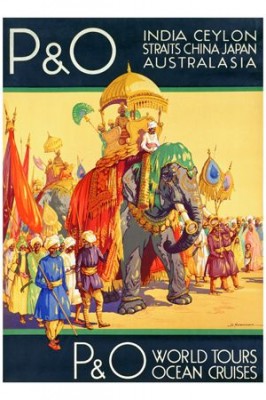
Asia: It's the latest thing
Traditionally the Asian tourists are not big cruisers. Cruise lines like Star Cruises began mostly as floating casinos for the Chinese who love to gamble and it’s only more recently when a few Europeans and Australians began cruising that they’ve moved to more conventional itineraries with shore excursions.
But cruising in Asia hasn’t just been the domain of locally-based operators. P&O, for example, have a long history of carrying ‘tourists’ on ‘pleasure cruises’ to the orient featuring such then colonial ports as Hong Kong (the Riviera of the Orient) and Singapore (the city of tropical splendour).
Australians are now looking beyond the commonplace South Pacific and Mediterranean offerings and rediscovering cruising in Asia as the ‘orient’ builds world-class infrastructure to accommodate the growing fleet of vessels heading for their ports.
In just the last few years alone, Singapore, Hong Kong and Shanghai have introduced space-age terminals exclusively for the cruise market as they battle it out for the lion’s share of the cruise ship port calls.
Spurred on by a GFC slump in American cruising that is only now starting to recover, the big cruise lines looked our way for new markets as the Americans stayed home in droves.
Carnival, Holland America, Princess, Royal Caribbean, Celebrity and Cunard are just some of the heavy-hitters sending their ships down our way to connect us with Asia.
Here are a few examples of who’s going there.
RCCL’s Voyager of the Seas and Mariner of the Seas will head to Japan, Korea, Singapore, Hong Kong, Vietnam, China, Japan, Malaysia, Thailand and Taiwan.
Cunard, as part of their regular around-the-world itineraries, will visit Indonesia, Vietnam, Sri Lanka, South Korea, Malaysia, Philippines, Thailand, China, Japan and India.
Princess, an established visitor to Asia, will visit China, Hong Kong, Singapore, Brunei, Thailand, Vietnam and even Cambodia.
The historic former Dutch merchant line, Holland America, is not particularly known for its Asian itineraries, but in 1989, it became part of the massive Carnival group and began expanding its pleasure cruise fleet. Today, ms Volendam and ms Zaandam are regulars in the Asia-Pacific region visiting such ports as Hong Kong, Koh Samui (Thailand), Halong Bay (Vietnam), Nagasaki, Shanghai and Singapore.
Celebrity too will visit Vietnam, Thailand, China, Bali and more. Celebrity Millennium will sail between Singapore and Hong Kong with overnight calls in Bangkok, Ho Chi Minh City and the majestic Halong Bay in Vietnam.
Apart from the major, deepwater ports, Asia is ideal for exploring some of the lesser known ports.
Azamara, for example will sail right into the heart of both Bangkok and Ho Chi Minh (Saigon) adding an extra dimension to the cruise experience when guests can walk off and virtually straight into the hub of these exciting cities and avoid the tiring coach transfers otherwise required. Azamara’s list of Asian ports vastly exceeds those of the much bigger vessels thanks to its smaller dimensions allowing access to such exotic spots as Langkawi (Malaysia), Puerto Princesa, (Philippines) and Yangon (Rangoon) in Myanmar (Burma).
If you’re quick, you might get one of the last cabins on SeaDream II, one of the world’s most acclaimed luxury small ships as it makes its Asian debut. Carrying just 52 spoiled couples, this delightful, ultra exclusive, all-inclusive vessel visits Thailand, Vietnam, Burma, China and Indonesia and may not return until 2015.
Similarly, Ponant, Hapag-Lloyd and Orion (now Lindblad National Geographic) delve even deeper into the Asian experience with vessels smaller again but lacking nothing in comfort and facilities. These ‘expedition’ and ‘adventure’ ships deliver a considerably more enriching experience, often visiting ports with little or no infrastructure, yet able to cope with just 100 or so passengers arriving by Zodiac fast tender.
Dig deeper again and you’ll find a wealth of river cruising options becoming increasing popular as travellers discover the wonders of the Mekong (in Vietnam and Cambodia) and the mysterious Irrawaddy (Burma) aboard the classic Pandaw vessels or those of the stylish Heritage Line. There is some concern that the Mekong and Irrawaddy may go the way of the Yangtze with numerous dam projects planned for the upper reaches of these famous waterways, the impact of which is undetermined. So, the message is clear, see these historic and significant rivers now while they retain much of their natural appeal.
When planning any Asian cruise, it’s wise to consider that the major ports with international airports are where the ships will ‘turn around’ or begin or end a sector and take new passengers. Singapore, Hong Kong, Shanghai, Bali (Denpassar) and Mumbai are typical such cruise hubs, so it makes sense to plan a few extra days at each end to explore these vibrant cities.
Some must-do shore excursions when in Asia
Take a local small boat cruise on the UNESCO World Heritage-listed Halong Bay. Sure, everyone does it, but you’ll know why when you do. It’s spectacular.
Nagasaki in Japan is best known for its tragic annihilation in World War II, but its European connections go back to the founding Portuguese. Like so much of Japan, the history and culture will enthral you.
From the modern Tianjin cruise terminal, head into Beijing for the iconic attractions of the Great Wall, Tiananmen Square and Forbidden City. Say "nǐ hǎo" to Chairman Mao.
Hong Kong just screams out to visitors and if you’re not there for two or three days, you’re in danger of missing out on The Peak tram, Lantau Island or Stanley market. If you’re clever, you’ll allow time for a full day (at least) in stunning Macau too.
Singapore invites you with sleek, clean and efficient infrastructure and is a benchmark for all modern Asian cities. Sip a Singapore Sling at Raffles Hotel, ogle the spectacular Marina Bay Sands complex and touch the sky from the Singapore Flyer.
Chiang Mai: Pillars of Tranquility
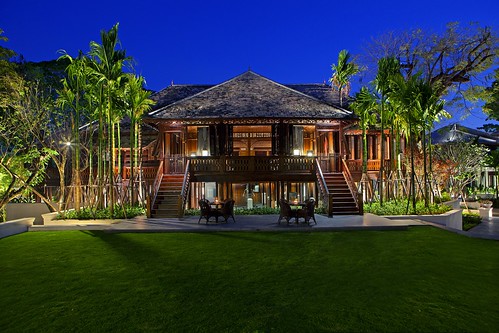
The former royal city of Chiang Mai in Thailand’s mountainous north, rises above the noise from the rowdy south. Roderick Eime escapes the rabble.
“Everything in Siam has its own time”
So said the bold Anna Leonowens to King Mongkut in that famous piece of semi-fiction, “Anna and the King”
And if that time was now, the former Kingdom of Siam has indeed come into its own.
While the southern territories abound in hedonistic pleasures, attracting record tourist numbers, the north retains the charm and beauty that so enthralled the 19th century royal governess. With her precocious son, Louis, the two lived in the King of Siam’s court for six years from 1862. Anna left, never to return, while Louis returned 15 years later to begin an enterprise in the burgeoning teak trade.
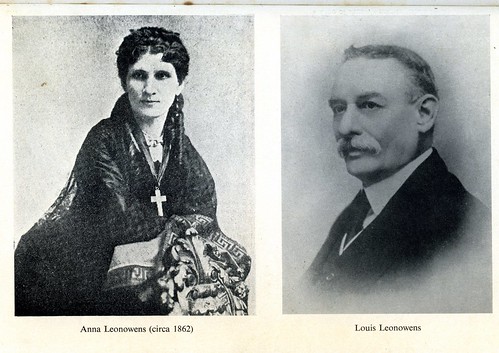
He returned to the former seat of the royal family, Chiang Mai, and built a magnificent manor in the traditional Thai style. That residence has now been restored and forms the centrepiece of the superb new boutique resort, 137 Pillars House.
So called because of the number of teak pillars on which the house was built, the immaculately renovated structure now hosts the restaurant, bar and lounge of the property and transports guests back to a time of colonial opulence, when the ways of England were the ways of the world.
Like so many grand old houses around the world, it nearly fell into total disrepair and locals were already calling it Baan Dam, or “black house”. In 2002, Bangkok-born Panida Wongphanlert was looking for a property in which to retire from the frenetic pace of Bangkok. She was shown many sites, but the black house kept haunting her.
“We were charmed at first sight by 137 Pillar House. As we learned the true, fascinating story of this house and the East Borneo Company, we knew our family could share this slice of Thai history with the world,” said Panida at the time.
The restoration involved removing the house from its pillar foundation and building new, concrete ones. During this process odd relics kept appearing; an Edison light bulb, crockery fragments, ornate wood carvings, bottles and even a bath tub. All of these curiosities are now displayed under the main house next to the gym in a kind of ad hoc museum.
The 30 suites stand a respectful distance from the house and were all scratch-built. They range from the 20 entry-level Rajah Brooke Suites at 70 sqm through the six East Borneo Suites (75sqm) to the premium two William Bain Terrace Suites (100sqm) and two Louis Leonowens Pool Suites (135sqm). All display exquisite décor including 400-thread count linen enveloping the four-poster beds and reams of Jim Thompson silk embellishing the walls and windows. Each suite has a private library, espresso machine and party-sized day bed on the balcony or veranda.
The original house hosts The Dining Room, Drawing Room and Jack Bain’s Bar, named in deference to the last owner, whose prominent family preserved the house since the demise of The Company and all foreign traders in 1960, when Thai natural resources were nationalised. Swing by The Spa then take high tea in a wicker chair on the verandah before adjourning for dinner and exquisite contemporary Thai cuisine. Finish the day with a cognac and cigar.
When you’re not immersing yourself in the delights of the resort, there’s the charm of Chiang Mai to absorb, a city that has beguiled westerners since the mid-19th century when the real royal student, King Chulalongkorn, invited the first Europeans to settle in. There’s Jack Bain’s personal project, the Wat Gate Museum with its eclectic assortment of colonial memorabilia and photographs, or the Khar Rham Temple, the spiritual centrepiece of the former ‘foreigners-only’ district.
Across the river, in the former Siamese sector, is the sprawling night markets and shopping precinct. Or further out of town adrenalin junkies can get their fix on the Eagle Track Zipline, venture into a tiger cage or ride one of the majestic elephants at Patara Elephant Farm.
Chiang Mai is also home to the Baan Tong Luang Hill Tribes Village, an eco-agricultural project that attempts to preserve the traditional agrarian culture of the Lahu, Hmong, White Karen and the Long necked Karen people. For many visitors this is the only exposure they will get to these vanishing cultures and while not a perfect example, it is an enlightening recreation all the same.
Life for the bold and adventurous expatriates of 150 years ago was harsh and luxurious in equal measure. While the men would disappear into the jungle for months at a time in search of the valuable timber, the women would occupy themselves with tea, embroidery and gossip. A lot has changed in that time, but Chiang Mai has so far resisted the brash, bawdiness sweeping the south, retaining the regal aura on which it was built.
Although Anna lamented to her royal pupil “You cannot shut the world out forever”, at 137 Pillars in Chiang Mai, a few days may be all you need.
Three comparable resorts
• The Chedi (now Anantara)
• The Four Seasons
• Mandarin Oriental Dhara Dhevi
Trip notes
Getting there
Thai Airways flies 11 times a week from Sydney to Bangkok with daily connections to Chiang Mai. 1300 651 960, thaiairways.com.au.
Staying there
137 Pillars House is a gated urban resort located in the Wat Gate district of Chiang Mai, close to the centre of town, but quiet enough to imagine you are elsewhere.
There are 30 suites ranging from AUD$350.00 (per single or couple) for a 70sqm standard suite up to $1100 for a 135 sqm pool suite.
More information
Journeys: your free travel magazine
Journeys Magazine is for the modern, thinking traveller who cares about the places they visit.
Looking for somewhere new and exciting away from the cocktail set? You might just find it here.
Delivered electronically, so no carbon to offset. All we need is your email address.
Wales: Welsh Revhead
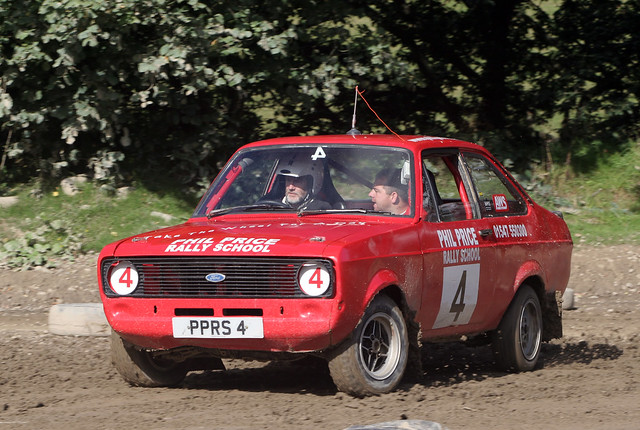
Hiding among the idyllic Welsh countryside is a notorious school for boys and girls.
Phil was a lousy tour guide. Here we were in the gorgeous green dales of Wales and what was I going to see at around 200 km/h? Mighty trees, a mere metre or so from my door handle were an unseen blur and I never even saw the hundred metre drop barely an arm’s length away. The little Ford Escort coupe had rock-hard suspension, very poor noise insulation and was caked in thick dirt. But I asked for it.
Phil Price is one of the UK’s top rally instructors. Located in the lush, picture-postcard hills of Wales, about 50 miles west of Birmingham, Rally HQ is a modest demountable under a giant oak tree and full of photographs, trophies and model cars. Phil caught me staring at a shot of a 1980s-era Mk.II Escort at full noise. I thought I recognised the vivid yellow helmet behind the wheel. “Yep, that’s Ayrton Senna. He loved it here.” Many of the world’s top rally teams use his vast forest facility for pre-event and off-season testing, but I’m here for day of “hands on” tuition in this knife-edge sport.
Wales has proud rally heritage and is the current host to the oldest regular international rally event, Rally GB. Now branded Wales Rally GB, the Welsh Government is underpinning its support of the event with an impressive economic promotion. Despite the unforeseeable and premature termination of the 2005 event, Wales have committed to support the event until 2011, reinforcing the broad public and governmental backing.
Meanwhile, back at Phil’s, ten of us gather around in the “briefing room” for a run-down of the day’s activities. Scanning the motley assemblage, his quiet, laconic demeanor belies the intensity behind sharp, steel-blue eyes. A dignified, albeit minimal coiff of grey hair frames his lean, chiseled features. There are the inevitable “hey-day” anecdotes, near death experiences and “there I was” tales related in a straightforward, matter-of-fact manner.
Phil is refreshingly light-on for whiteboard coaching and bureaucracy and we’re soon revving up for our first laps of his artificially muddied, kidney shaped circuit with all the traction of an ice rink. It’s pretty evident from the get-go that none from this batch of freshmen are of the calibre they imagined with numerous tail-slides, understeers and plain ol’ balls-ups.
Despite our impressive and comprehensive array of driving violations, our instructors (one of whom is female) are sympathetic and delightfully non-judgmental, thereby preserving our fragile male egos in the face of abject devastation. No “sergeant major” debasement required – we were doing just fine on our own.
Just when we thought we were getting the hang of it, out would come the water truck to deal us another hand of wildcards. In spite of all earlier predictions, our cumulative skill pool appeared to rise. Wild ‘tailies’ were tamed, throttle feet were unleaded and white knuckles turned to pearl.
Then, after some lunch, Phil calmly announced we were all going to have a steer of his AWD Turbo Cosworth Escort on the forest stage with him calling the notes. Talk about in the deep end.
Despite my own attempts at psychological desensitisation, the process of strapping into a full-blown (pun intended) rally car is highly intimidating. Helmet and microphone are installed and Phil’s voice, complete with signature Welsh accent, came across the invisible headphones in a barely intelligible stream of crackles and Cymraeg.
I don’t notice the speed as I attempt to hammer up the rocky hill toward the hairpin, engine struggling to stay on the power. What I do notice is the wholly incredible traction in this little car and I sense a glow of confidence as we slip noisily between the trees, Phil’s excited chatter still hissing in my ears. Fortunately, the route is fairly self-explanatory; this way road, this way trees and pain.
“Go right! Go right!” Phil yells when the car clearly wants to go left. I gather it up inelegantly and continue to the finish, my upper arms and shoulders protesting at the unusual exertion. Phil looks me plainly in the face, “not bad”. So ends my assessment.
 As the racks of the initiated continue to grow, smug satisfaction spreads amongst us like teenage debutantes. And as a grand finale and effective quench for our conceit, Phil unveils his secret weapon, another Cosworth Escort, only this time rear-wheel-drive and, according to Phil, “much more fun!” One-by-one, we’re installed as mute navigators and hurled around the same forest stage at roughly twice the speed. As we’re extricated, breathless and quivering, our day is complete. Trophies, for what I don’t know, are distributed and we depart knowing that, while we’re never going to steer like a real rally driver, we’ll never lose out on another parking spot at Coles!
As the racks of the initiated continue to grow, smug satisfaction spreads amongst us like teenage debutantes. And as a grand finale and effective quench for our conceit, Phil unveils his secret weapon, another Cosworth Escort, only this time rear-wheel-drive and, according to Phil, “much more fun!” One-by-one, we’re installed as mute navigators and hurled around the same forest stage at roughly twice the speed. As we’re extricated, breathless and quivering, our day is complete. Trophies, for what I don’t know, are distributed and we depart knowing that, while we’re never going to steer like a real rally driver, we’ll never lose out on another parking spot at Coles!
Doing It:
A Royal Rendezvous with the King of Coron
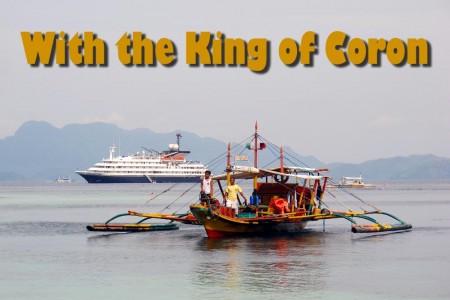
Coron
A Royal Rendezvous with the King of Coron
The mini monarch of a tiny Filipino enclave could have some lessons for the world. Words and images Roderick Eime.
“Yes your majesty, everything is arranged. No, thank you your majesty, we have everything we need.” And with that, Orion expedition leader, Justin Friend, flipped his Nokia shut and breathed a sigh of relief. We are about to meet His Royal Highness HM Tribal Chieftain Rodolfo Aguilar I in his ancestral kingdom, the island of Coron.
Orion II has just dropped anchor in the narrow straight between Busuanga Island and its lesser satellite, Coron, in the Sulu Sea about 300km SSW from Manila. It’s a wild part of the Philippines for sure, inhabited by the northern (or Calawian) Tagbanua people who are quite possibly the oldest ethnic group in the entire Philippines.
Despite his miniscule dominion, HRH Rodolfo is not a monarch to be trifled with. Together with his Council of Elders, he obtained a Certificate of Ancestral Domain Title for his people in 1998, a Native Land Title by any other name. In the hotbed of Filipino politics, that’s no mean feat and it means he has all-but-absolute rule over this ethnic enclave that includes not only the rugged limestone islands, but also the much prized fishing grounds.
Perched on the gunnels of our Zodiac tenders, the floppy-hatted delegation motors toward a secluded beach on Coron Island, just out of sight of the main township across the strait on Busuanga. Our landing site is a sheltered cove overseen by towering basalt cliffs splattered with gnarly outcrops of awkward-looking shrubs clinging to the sheer walls.

The stern of the sunken Japanese WWII freighter, Olympia Maru near Coron, Philippines. (c) Capt Peter Heimstaedt
During the Second World War, these craggy alcoves hid warships and transports of the Imperial Japanese Navy as they made the treacherous voyage between Japan and the battlefronts of Borneo and Papua New Guinea. With the Allies on the front foot in the closing months of 1944, twelve ships laden with urgent supplies for the beleaguered Japanese forces were located by Allied aircraft and promptly sunk at anchor. This ‘ghost fleet’ of Coron is now one of the world’s best locations for wreck divers and little dive shops dot the main street in town catering to the constant trickle of aquanauts arriving from all over the world.
Mostly stripped of their valuable contents by post-war salvagers, the bare hulks are easily explored by divers of modest ability in depths of around 25 to 30 metres. Colourful marine organisms have attached themselves to the rusting relics while batfish, stone fish, barracuda, lion fish - and scores of others whose names I've never learned - patrol the decks and open holds where doomed Japanese seamen once fought to defend their vessels from dozens of dive bombers.
As our tiny flotilla approaches the delicate little beach, we can see all is in readiness for the royal occasion. Makeshift picnic shelters and benches festooned with local flora await our bottoms while local villagers bustle about with last-minute preparations. Unloaded and ashore, we gather in anticipation as HRH prepares to greet us. Meanwhile, Justin, who spent weeks in the region organising this regal occasion addresses the gathering.
“This is really quite a special occasion,” he begins with uncharacteristic restraint, “we are the first cruise ship to visit the kingdom of Coron and it is with the blessing of His Royal Highness that we are here enjoying this magnificent location.”
Justin proceeds to make a theatrical sweep of his arm, symbolically embracing the gorgeous bay, its aggressive basaltic grandeur and all who camp within. I get the feeling he’s been rehearsing this moment. And with this none-too-subtle cue, an unassuming gentleman breaks from the ranks of the locals and steps forward to address us. No mink or ermine nor pearled crown, King Rodolfo’s regal accoutrements extend to a clean, collared polo shirt adorned with a delicate yellow scarf and crisp denim shorts. A pair of well-worn blue Crocs completes the ensemble.
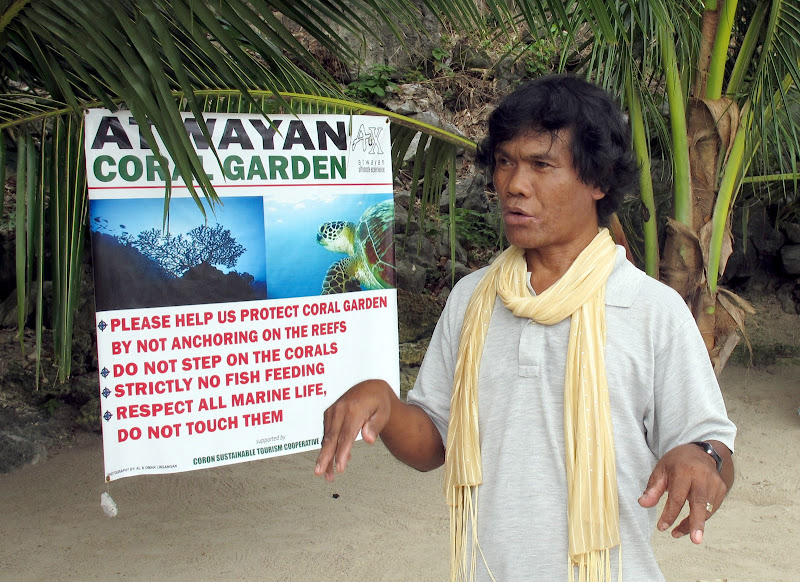
His Royal Highness HM Tribal Chieftain Rodolfo Aguilar I
Through an interpreter, his majesty greets us and we join him in a short prayer. The Tagbanua people are nominally Christian although adherence to traditional rituals and beliefs is strong. They have their own distinct language and even a unique script, but those with the knowledge of the ancient tongue are dying out.
With the solemn ceremony over, the gathering is treated to a display of traditional Tagbanua dance. It’s raw and rudimentary without lavish props or production, but the significance is not lost. The courting dance, or segutset, in particular, is unmistakable and Justin looks like he may be spirited away into the jungle at any moment by a particularly enthusiastic female member of the tribe. While his subjects quickly dispense with formality and embrace us in the festivities, King Rodolfi maintains an aloof air as he taps rhythmically on a skin drum. He is king after all.
The imposing basalt cliffs that protect us from the blazing sun also provide a valuable resource for the Tagbanua: swift nests. These tiny birds nest high in the cliffs in little nooks and on ledges 100 metres and more above us. One athletic young man, eager and proud, climbs the sheer walls as we look on holding our breath. Barefoot and clad only in a flimsy pair of shorts, he clambers vertically to an overhang from where he throws us a cheery wave.
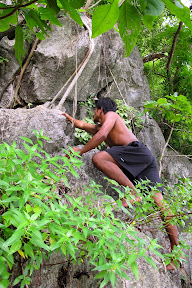
A young Tagbanuan man scales basalt cliffs on Coron Island to retrieve swift nests for birds nest soup
Swift nests have been used in Chinese cuisine for hundreds of years and a kilo of saliva that forms the little birds' nests can be worth up to $10,000. The king, therefore, is mindful of potential disturbance to his fragile resource and tourism like ours is cautiously welcomed as long as it doesn’t impact on his hard-won cultural and economic independence.
After a day of lazing in the opal hued waters around Coron and a visit to Kayangan Lake just next door, reputedly the cleanest inland body of water in the Philippines, the party moves back onto Orion II. Our Coron cultural liaison and local eco-hero, young Al Linsangan, musters his minstrels on the rear deck and enthrals the dinner guests with a hauntingly soulful repertoire of local rhythms set to modern electronic instruments.
As the well-relaxed diners tap their feet to Al and his troupe’s cheery ballads, I can’t help feeling he’s singing a song of optimism and hope. Will the tiny Tagbanua community thrive or shrivel in the gaze of global tourism. I put that thought aside for a moment and sing along.
END
Orion II returns to Coron in 2012 as part of their Yangtze, Ryukyu and Philippines itinerary departing Shanghai 11 July. The 15-day expedition includes stops in Japan, Taiwan and Borneo. Fares start from $10350 per person. Refer to your travel agent or Orion Expedition Cruises for any discounts applicable.
www.orionexpeditions.com Toll Free Australia: 1300 361 012
For information on tourism in Coron, see www.corontourism.info
Denmark: Quirky Copenhagen
There are some things you just have to do when you go to Copenhagen, but not all of them you’ll find on the tourist bureau brochure rack. Changing of the guard, canal cruises, palaces and art galleries are all there for the picking. But how about beneath surface? Every city has their little secrets and off-radar attractions. We go in search of the quirky, unusual and plain nutty.
Sensible tips: cOPENhagen CARD for free admission to 65 museums and attractions plus all-you-can-ride public transport. DKK 249/24hrs (A$47). Time your museum visits as many are only open from 12-4pm and closed Mondays.
www.visitcopenhagen.com
1 Aussie funk pumps the Plads
How do you extend your leading edge in a city renown for avant garde design and innovation? The Adina Apartment Hotel in Amerika Plads not only combines cool design and gala interiors, but does it with an Australian flair. SJB Interiors’, Andrew Parr oversaw the 2006 fit-out of this innovative property that turned heads in this hard-to-impress town. Australia’s isolation creates unique solutions reckons Parr, whose company is decking out Adinas in Berlin, Frankfurt and Budapest.
www.adina.eu
2 Big Drinks, Big Ticket, Short Shrift
Okay, you can argue the political correctness all night long, but the Simons don’t care. Their nightclub pushes the boundaries in lots of ways. From their fanatical, social media driven guest list, raunchy DJs to the dwarf bartenders, Simons continues to attract and retain the Copenhagen elite. Transient visitors are unlikely to get past the door without an A-list FB profile, but it might be fun to walk past the old art gallery in Store Strandstræd after midnight to see who’s trying.
www.simonscopenhagen.com/
3 On Yer Bike or Ride it Like You Stole it
The inherent honesty in the Scandinavian society makes the Copenhagen City Bike Project a viable concern. In one of the world’s most bike-friendly cities, getting around the CBD is as easy as grabbing the nearest bike and pedalling your heart out. Launched in 1995 with 1000 fun, if somewhat dowdy bicycles, the project has nonetheless continued from strength to strength. Drop a 20 DKK in the lock, cycle to your heart’s content within the city limits and get your deposit back on return.
www.bycyklen.dk/english
4 Hello sailor – Naval gazing
Of all the great seafaring nations, Denmark barely rates a blip on most radar screens, but don’t tell that to the nautical Danes. Today’s Royal Danish Navy is just a dozen or so minor vessels, but at the 1677 Battle of Køge Bay, their mighty fleet routed the superior Swedes in a heroic action. All this and more is celebrated at the Orlogsmuseet (naval museum) with dioramas, ship models, weaponry and regalia displays. Double your bang with a visit to the Artillery Museum too.
www.orlogsmuseet.dk
5 Canal Vision – DIY Skipper
While the package tourists and coach herds pack into the canal barges, you can make your way through the scenic waterways of København at your own pace. Skipper a 6hp tinny with up three friends for DKK 300 (A$55) per hour with all the gear included, just be over 18 and careful. Located near the fish markets (Fisketorvet), just show photo ID and be back by 8pm. Bigger boats for up to eight are available too.
www.copenhagenboatrent.dk
6 Hash Tag- No churches in Christiana
Forty years ago in September, a bunch of disenchanted hippies kicked down the gates on a disused naval base and formed one of Europe’s most controversial alternative communities, calling it Christiana. Biblical references aside, 1000 people call it home today and there always seems to be some dispute looming over occupied land. Artists, drifters and thinkers make up this quasi-autonomous enclave but sympathetic visitors are welcome. Take a guided tour for DKK40 (A$8) but be careful taking photos.
www.christiania.org
7 Reuse and Recycle – From leading to lagging edge
So what happens to all the cool stuff when the Danish designerati are bored with it? Lots of it ends up in Copenhagen’s famous network of second-hand and vintage stores. Names like Time’s Up, Melange de Luxe and the Fisk Charity Café offer up lashings of pre-loved, lagging-edge fashion and dag-a-brac for those with a retro view. The latter sends proceeds to worthy causes and only offers recycled, fair trade and organic items.
www.danchurchaid.org/get-involved/volunteer/second-hand-shop-fisk
8 Going Mad for Danish
While some in the know would say Copenhagen’s noma is the world’s best restaurant, there seems to be as many votes for one of the most unusual. Madeleines Madteater (food theatre) is as much performance concept as it is gourmet cuisine where food is the centre of attention. Cavorting, choreographed waitstaff might appear to having a lend of you with hand-fed dishes and servings without cutlery, but the experience is seriously memorable however you chew it.
www.madeleines.dk
9 Dig deep – underground Copenhagen
The story of Christianborg Palace goes back 800 years covering virtually the entire history of Copenhagen. The royal Danes loved big flashy castles, but they were mighty careless and the first two palaces burned down. When they were building the third, the foundations of the very first, dating back to Archbishop Absalon in 1167 were unearthed. Today you can venture into the subterranean chamber under the palace and see the remains of this historic building.
www.ses.dk/ruins
Getting there:
THAI flies 40 times a week from Australia to Bangkok with daily non-stop connections to 13 major cities in Europe, including Copenhagen. Contact travel agents for the latest special offers and promotions or visit www.thaiairways.com.au.
The writer travelled with THAI Airways and stayed as a guest at Adina Apartments
google_ad_client = "pub-5161388013621688";
google_alternate_ad_url = "http://travography.com/showsell.html";
google_ad_width = 468;
google_ad_height = 60;
google_ad_format = "468x60_as";
google_ad_type = "text_image";
//2007-02-08: Traveloscopy Story Banner 468
google_ad_channel = "8406711044";
google_color_border = "FFFFFF";
google_color_bg = "FFFFFF";
google_color_link = "063E3F";
google_color_text = "6F6F6F";
google_color_url = "78B749";
//--></script>
<script type="text/javascript"
src="http://pagead2.googlesyndication.com/pagead/show_ads.js">
</script><p>
<script type="text/javascript" src="http://tweetmeme.com/i/scripts/button.js"></script><P>

